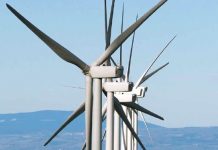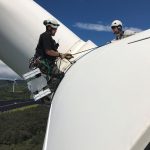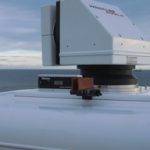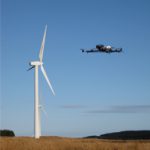The Triton Wind Profiler manufactured by Vaisala, a global leader in environmental and industrial measurement, has shown exceptional performance across two winters in the northern reaches of Finland. With two Tritons measuring the wind for Finnish developer and operator Puhuri Oy, Vaisala has demonstrated the unmatched resilience of the system in extreme winter conditions and the strategic and logistical advantages of remote sensing for wind-energy firms in cold climates across the globe.
“We build and operate wind parks in some of the world’s most challenging weather conditions,” said Teppo Hilakivi, technical expert at Puhuri Oy. “Vaisala’s Triton is the only practical way to reduce the uncertainty in our annual energy projections, allowing us to improve the profitability of our development process.”
Wind-energy developers are increasingly exploring wind potential in northern latitudes, encouraged by high wind speeds and a clear route to project permitting far from population centers. Innovation in cold-climate wind-turbine technology, such as anti-icing and heating systems, has accelerated the expansion of the wind energy in markets such as northern Europe and Canada.
However, while advancements in turbine technology are driving growth, shortfalls in traditional resource assessment and site analysis approaches have, in many cases, thwarted the efforts of developers and operators in these regions. Cold, icy weather complicates the installation of measurement masts and can damage mechanical sensors, while off-grid locations and low solar availability in polar regions make it difficult and costly to keep large instruments powered-up.
Remote sensing is swiftly becoming the preferred approach for collecting hub-height measurements for wind-resource assessment and also enables developers to collect reliable early-site data before making further investment decisions. Yet, when it comes to operations in temperatures down to minus-40 degrees C, many remote sensing devices suffer from performance and reliability issues — ranging from icing issues to intensive fuel requirements — that ultimately drive up maintenance costs and affect the quality of the data collected.
“Triton’s resilience in cold climate conditions is impressive — its measurements are very accurate, and the power consumption is so low that we can easily keep it running for three or four months without refuelling,” Hilakivi said. “And when it does come time to move the Triton to a new site, it’s light enough to be towed by a normal passenger car.”
Vaisala’s Triton Wind Profiler is built to withstand harsh winter weather conditions, and the compact, mobile unit has the lowest power requirements of any system used in the wind industry. With an optional methanol-fueled extended power option to supplement the Triton’s solar panels during low sunlight months, the system offers continuous, unattended operation for several months without refueling.
These features have enabled Puhuri to conduct extensive six- to 14-month measurement campaigns throughout northern Finland, improving the profitability of the company’s wind-development projects.
Vaisala’s Triton Wind Profiler has been deployed at more than 3,700 locations across more than 30 countries worldwide to support project stakeholders from site and resource assessment to ongoing operational performance analysis.
Source: Vaisala
For more information, go to www.vaisala.com/energy






































